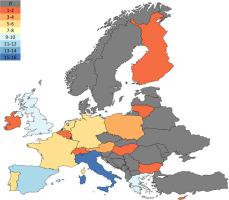Water Research ( IF 11.4 ) Pub Date : 2021-09-29 , DOI: 10.1016/j.watres.2021.117711 Maeve Louise Farrell 1 , Aoife Joyce 1 , Sinead Duane 2 , Kelly Fitzhenry 1 , Brigid Hooban 1 , Liam P Burke 1 , Dearbháile Morris 1

|
Globally, water-based bathing pastimes are important for both mental and physical health. However, exposure to waterborne organisms could present a substantial public health issue. Bathing waters are shown to contribute to the transmission of illness and disease and represent a reservoir and pathway for the dissemination of antimicrobial resistant (AMR) organisms. Current bathing water quality regulations focus on enumeration of faecal indicator organisms and are not designed for detection of specific waterborne organisms of public health concern (WOPHC), such as antimicrobial resistant (AMR)/pathogenic bacteria, or viruses. This investigation presents the first scoping review of the occurrence of waterborne organisms of public health concern (WOPHC) in identified natural bathing waters across the European Union (EU), which aimed to critically evaluate the potential risk of human exposure and to assess the appropriateness of the current EU bathing water regulations for the protection of public health. Accordingly, this review sought to identify and synthesise all literature pertaining to a selection of bacterial (Campylobacter spp., Escherichia coli, Salmonella spp., Shigella spp., Vibrio spp., Pseudomonas spp., AMR bacteria), viral (Hepatitis spp., enteroviruses, rotavirus, adenovirus, norovirus), and protozoan (Giardia spp., and Cryptosporidium spp.) contaminants in EU bathing waters. Sixty investigations were identified as eligible for inclusion and data was extracted. Peer-reviewed investigations included were from 18 countries across the EU, totalling 87 investigations across a period of 35 years, with 30% published between 2011 and 2015. A variety of water bodies were identified, with 27 investigations exclusively assessing coastal waters. Waterborne organisms were classified into three categories; bacteria, viruses, and protozoa; amounting to 58%, 36% and 17% of the total investigations, respectively. The total number of samples across all investigations was 8,118, with detection of one or more organisms in 2,449 (30%) of these. Viruses were detected in 1281 (52%) of all samples where WOPHC were found, followed by bacteria (865(35%)) and protozoa (303(12%)). Where assessed (442 samples), AMR bacteria had a 47% detection rate, emphasising their widespread occurrence in bathing waters. Results of this scoping review highlight the potential public health risk of exposure to WOPHC in bathing waters that normally remain undetected within the current monitoring parameters.
中文翻译:

评估在欧洲天然存在的沐浴水中暴露于具有公共卫生问题的有机体的可能性:范围界定审查。
在全球范围内,以水为基础的沐浴消遣对身心健康都很重要。然而,接触水生生物可能会带来重大的公共健康问题。沐浴水被证明有助于疾病和疾病的传播,并代表了抗菌素耐药性 (AMR) 生物体传播的蓄水池和途径。当前的沐浴水质法规侧重于粪便指示生物的计数,并非旨在检测具有公共卫生问题的特定水生生物 (WOPHC),例如抗微生物药物 (AMR)/致病细菌或病毒。本次调查首次对欧盟 (EU) 已确定的天然沐浴水中出现的公共卫生关注的水生生物 (WOPHC) 进行了范围界定审查,旨在批判性地评估人类接触的潜在风险,并评估当前欧盟沐浴水法规对保护公众健康的适当性。因此,本综述试图鉴定和综合所有与细菌(C弯曲杆菌属、大肠杆菌、沙门氏菌属。, 志贺氏菌属。, 弧菌属。、假单胞菌属、AMR 细菌)、病毒(肝炎属、肠道病毒、轮状病毒、腺病毒、诺如病毒)和原生动物(贾第鞭毛虫属和隐孢子虫)spp.) 欧盟沐浴水中的污染物。60 项调查被确定为符合纳入条件,并提取了数据。同行评议的调查来自欧盟 18 个国家,在 35 年的时间里共进行了 87 项调查,其中 30% 是在 2011 年至 2015 年期间公布的。确定了各种水体,其中 27 项调查专门评估沿海水域。水生生物分为三类:细菌、病毒和原生动物;分别占全部调查的 58%、36% 和 17%。所有调查的样本总数为 8,118 个,其中 2,449 个(30%)检测到一种或多种生物体。在发现 WOPHC 的所有样本中,有 1281 个(52%)检测到病毒,其次是细菌(865 个(35%))和原生动物(303 个(12%))。. 本次范围界定审查的结果突出了在沐浴水中暴露于 WOPHC 的潜在公共卫生风险,在当前监测参数范围内通常不会检测到这些风险。











































 京公网安备 11010802027423号
京公网安备 11010802027423号